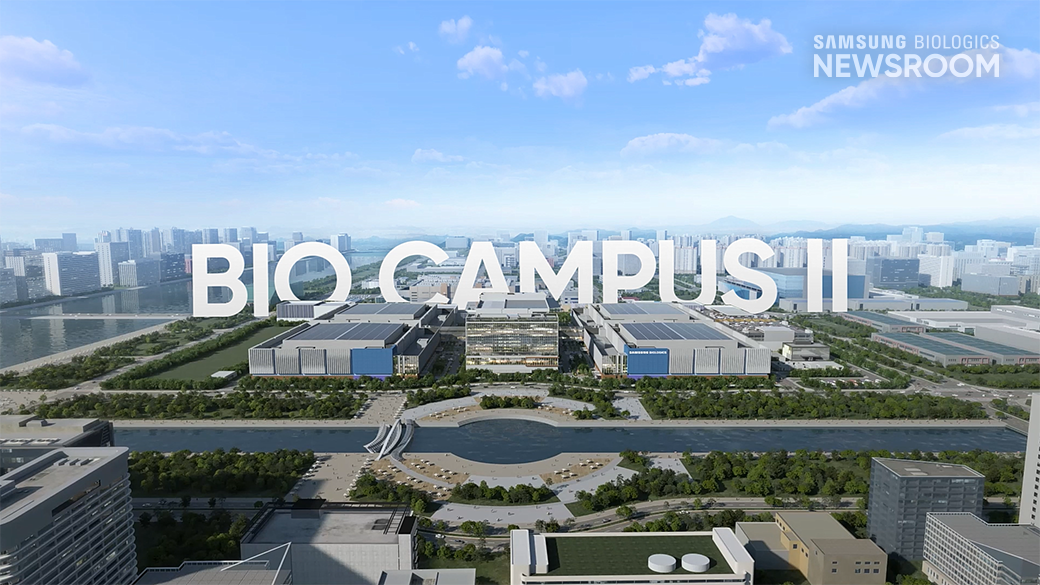
Bio Campus II, the future location of Plants 5-8
While the world continues to face mounting pressure to alter the trajectory of global warming, many companies are taking concerted climate action toward reducing their carbon footprint and implementing more sustainable practices. As part of our mission to build a more sustainable future for all, Samsung Biologics is adopting systems that reduce energy consumption and recycle waste throughout our current and future plants.
“As we continue to expand our capacity, we knew it was imperative that any new plants we built would now seriously impact our net-zero transition by 2050 or earlier,” said Hyeonsoo Min, Lead Engineer in the Plant 5 Task Force. “That’s why when designing Plant 5, we really tried to think outside the box on how we could bring this plant online without compromising our Scopes 1* and 2* emission reduction goals.”
* Scope 1: All direct emissions from activities of the company and under the control of Samsung Biologics.
* Scope 2: Indirect emissions created through purchased energy and used by Samsung Biologics for company operations.
Embracing a low-carbon design
When designing our new Plant 5, the Samsung Biologics team took a low-carbon approach by optimizing all energy sources and choosing recyclable building materials, including high-performance insulation that significantly reduces energy consumption. Once it becomes operational in April 2025, Plant 5 will use nearly 20% renewable energy across all operations, and it is expected to reduce the company’s carbon footprint by nearly 20% compared to its existing plants.
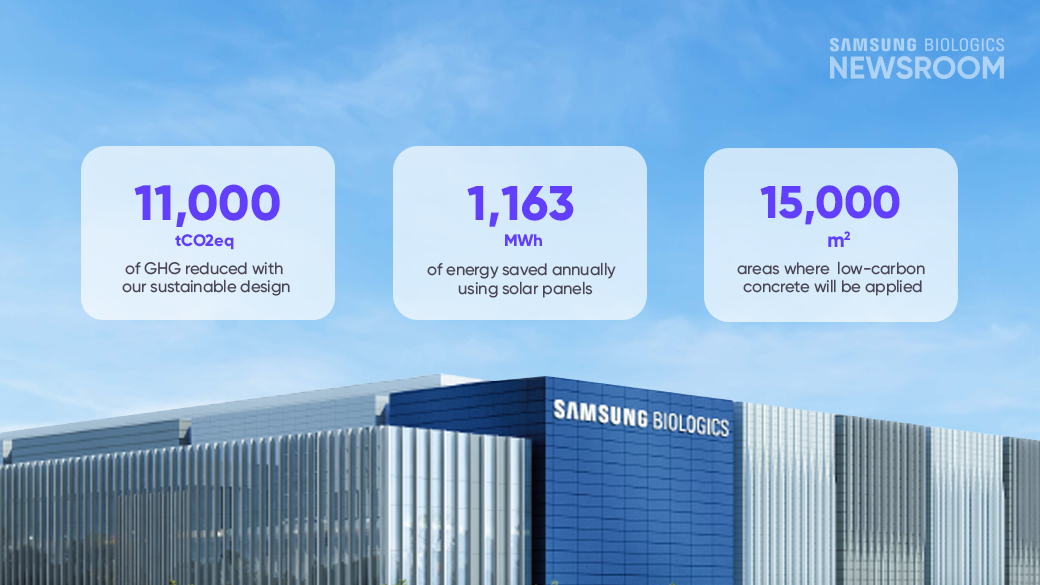
In terms of the building’s infrastructure, Samsung Biologics plans to use low-carbon green concrete, which contains 50% less carbon than traditional concrete, on 15,000 ㎡ of the total Bio Campus II. A megawatt-hour (MWh) solar power generator will be installed on the plant’s roof to save more than 1,163 MWh in a year.
Besides a reverse osmosis (RO) water treatment system, which reuses the wastewater generated from manufacturing water for injection (WFI), sustainable operation systems using geothermal power and municipal hot water have also been implemented into the facility’s structure, with the benefit of reducing over 11,000 tCO2eq of GHG emissions as well as operating costs.
“Plant 5 is designed to facilitate the transition to renewable energy from construction to future operations and to achieve our net-zero goal. We will continue our efforts to increase on-site renewable energy generation,” Min explained.
Paving the way for a greener future
Samsung Biologics recently published its annual ESG report, reflecting the company’s latest sustainability efforts. As part of the company’s mission to deliver net zero by 2050 or earlier, Samsung Biologics established new milestones: to cut 32% of Scope 1 and 2 emissions by 2030 and 62% by 2040.
In April this year, Samsung Biologics established an enhanced recycling area in Bio Campus I called the Green Center, aiming to achieve an 80% recycling rate. This facility will also be added to future manufacturing sites. The company introduced RFID technology to improve medical waste management efficiency by automatically identifying and tracking hazardous medical waste.
“With these sustainable practices, we are further strengthening our commitment to energy efficiency, renewable energy, and the reduction of our environmental footprint. We are taking steps toward a greener future while reducing costs and generating positive savings,” Min said.
As a leading sustainable CDMO partner, Samsung Biologics understands the seriousness of climate change and its impact on public health; therefore, we are stepping up to the challenge of leading our industry toward a more sustainable future.
“Just as our partners trust us to deliver the highest quality biomedicines, we are committed to building on that foundation to deliver sustainable outcomes,” he added.
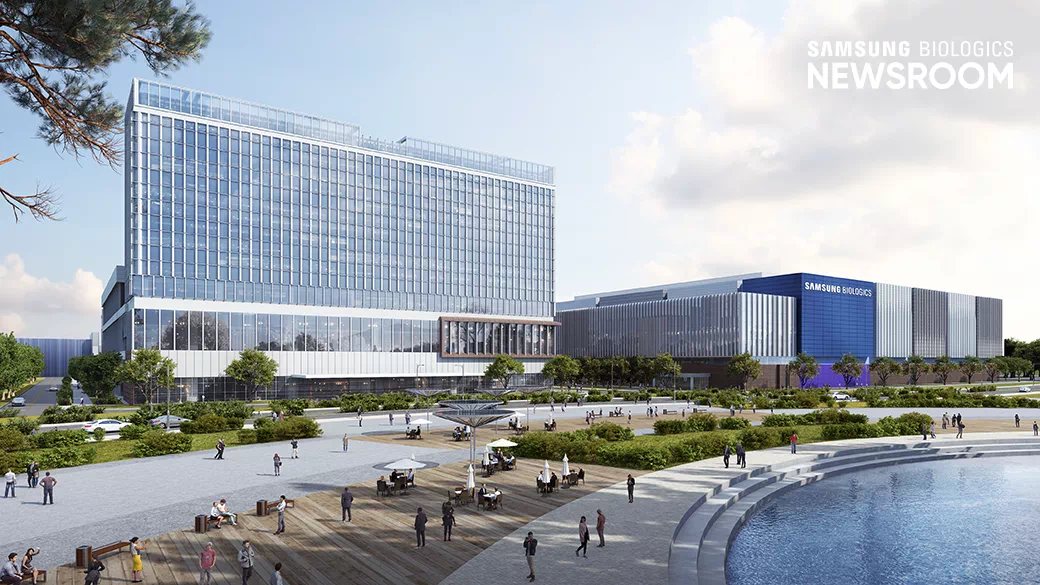
Driven. For a Sustainable Life.
Related contents
Sustainability 2023 ESG report
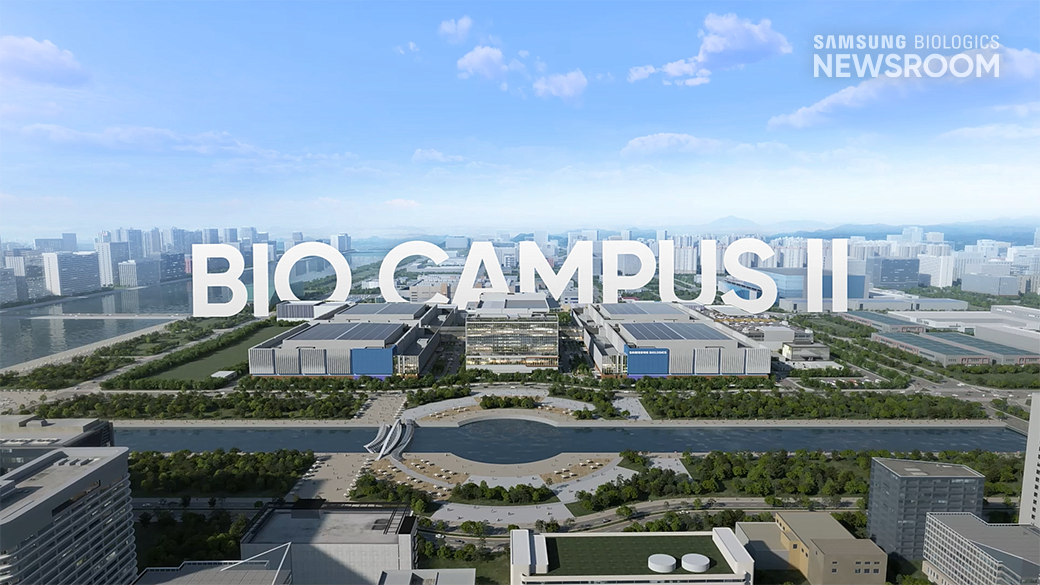
Bio Campus II, the future location of Plants 5-8
While the world continues to face mounting pressure to alter the trajectory of global warming, many companies are taking concerted climate action toward reducing their carbon footprint and implementing more sustainable practices. As part of our mission to build a more sustainable future for all, Samsung Biologics is adopting systems that reduce energy consumption and recycle waste throughout our current and future plants.
“As we continue to expand our capacity, we knew it was imperative that any new plants we built would now seriously impact our net-zero transition by 2050 or earlier,” said Hyeonsoo Min, Lead Engineer in the Plant 5 Task Force. “That’s why when designing Plant 5, we really tried to think outside the box on how we could bring this plant online without compromising our Scopes 1* and 2* emission reduction goals.”
* Scope 1: All direct emissions from activities of the company and under the control of Samsung Biologics.
* Scope 2: Indirect emissions created through purchased energy and used by Samsung Biologics for company operations.
Embracing a low-carbon design
When designing our new Plant 5, the Samsung Biologics team took a low-carbon approach by optimizing all energy sources and choosing recyclable building materials, including high-performance insulation that significantly reduces energy consumption. Once it becomes operational in April 2025, Plant 5 will use nearly 20% renewable energy across all operations, and it is expected to reduce the company’s carbon footprint by nearly 20% compared to its existing plants.
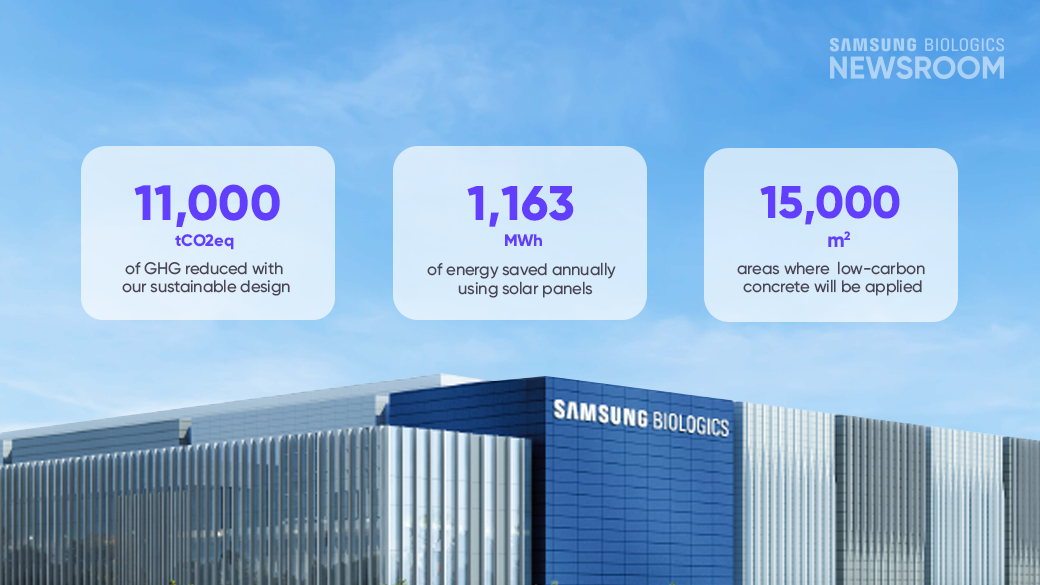
In terms of the building’s infrastructure, Samsung Biologics plans to use low-carbon green concrete, which contains 50% less carbon than traditional concrete, on 15,000 ㎡ of the total Bio Campus II. A megawatt-hour (MWh) solar power generator will be installed on the plant’s roof to save more than 1,163 MWh in a year.
Besides a reverse osmosis (RO) water treatment system, which reuses the wastewater generated from manufacturing water for injection (WFI), sustainable operation systems using geothermal power and municipal hot water have also been implemented into the facility’s structure, with the benefit of reducing over 11,000 tCO2eq of GHG emissions as well as operating costs.
“Plant 5 is designed to facilitate the transition to renewable energy from construction to future operations and to achieve our net-zero goal. We will continue our efforts to increase on-site renewable energy generation,” Min explained.
Paving the way for a greener future
Samsung Biologics recently published its annual ESG report, reflecting the company’s latest sustainability efforts. As part of the company’s mission to deliver net zero by 2050 or earlier, Samsung Biologics established new milestones: to cut 32% of Scope 1 and 2 emissions by 2030 and 62% by 2040.
In April this year, Samsung Biologics established an enhanced recycling area in Bio Campus I called the Green Center, aiming to achieve an 80% recycling rate. This facility will also be added to future manufacturing sites. The company introduced RFID technology to improve medical waste management efficiency by automatically identifying and tracking hazardous medical waste.
“With these sustainable practices, we are further strengthening our commitment to energy efficiency, renewable energy, and the reduction of our environmental footprint. We are taking steps toward a greener future while reducing costs and generating positive savings,” Min said.
As a leading sustainable CDMO partner, Samsung Biologics understands the seriousness of climate change and its impact on public health; therefore, we are stepping up to the challenge of leading our industry toward a more sustainable future.
“Just as our partners trust us to deliver the highest quality biomedicines, we are committed to building on that foundation to deliver sustainable outcomes,” he added.
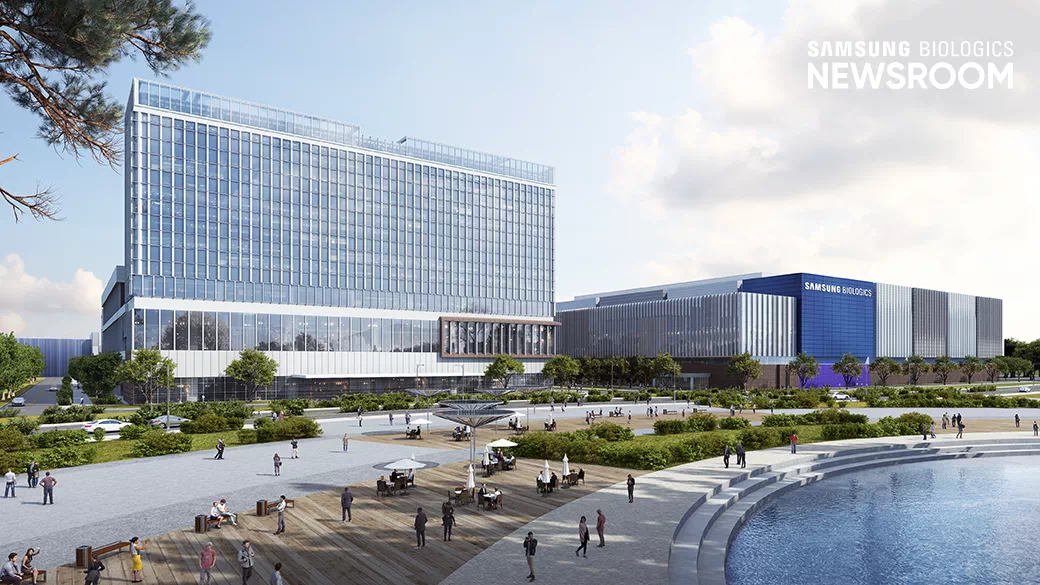
Driven. For a Sustainable Life.
Related contents
Sustainability 2023 ESG report
Bio campus 2 : 720KL
Plant 5 180KL
Plant 6 180KL
Plant 7 180KL
Plant 8 180KL
Open innovation
Plant 5
Dream Plant
Within your reach
Built for your success
Plant 5
Speed to Marktet
Integrated Design
Fully Automated
Carbon Neural
Operational in April 2025
Driven. For Life
Share article
Related Content